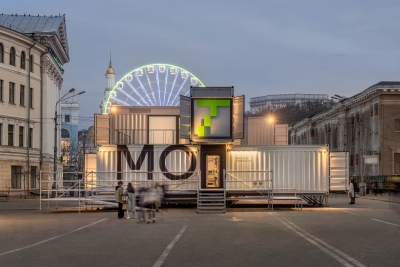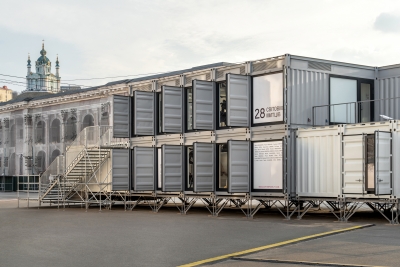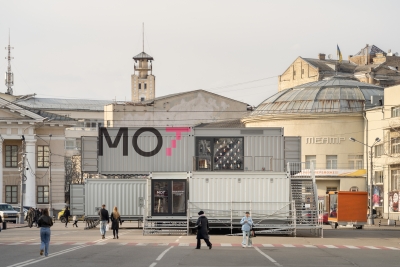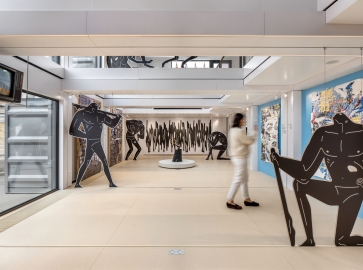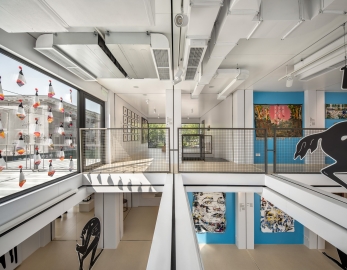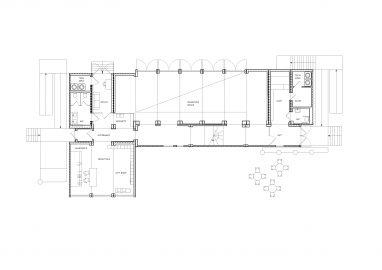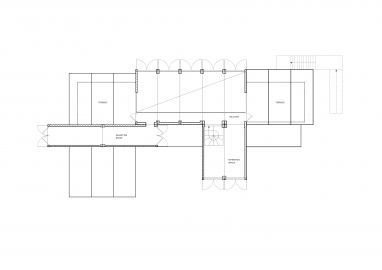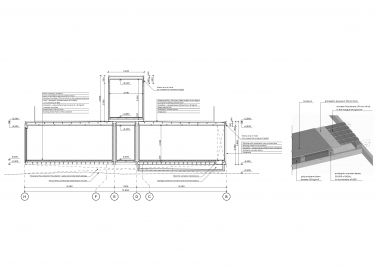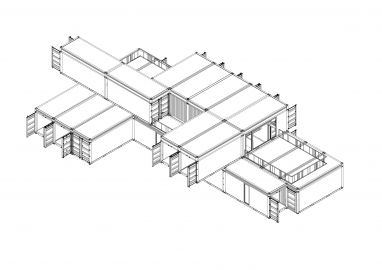MOT (Module of Temporality)
MOT (Module of Temporality) is a temporary cultural space, built from 27 shipping containers that can be disassembled, transported, and reassembled in less than 10 days. It houses a multimedia exhibition featuring works by 28 artists from 10 countries. The project started in Kyiv in February 2023 and has since traveled around three Ukrainian cities.
MOT is an attempt to capture the fluidity of life and time in art. The goal of the project is to demonstrate that even during times of war, significant cultural projects are possible in Ukraine.
With the use of container modules, symbolizing constant movement, we conveyed the idea of temporarity. Our structure is temporary, and so is everything, even the war.
MOT was designed to fit any urban landscape: from a teeming square in Kyiv to a green park spot in Lviv, it always looks organic in the chosen setting.
Since the construction was supposed to be transported over and over again, our main challenge was its mobility. We had to come up with a solution for stairs and ramps that can be disassembled and reassembled as well as ensure the construction’s stability for uneven land plots.
Normally, museums and cafes designed with the use of module containers are open seasonally during warmer months. However, MOT is supposed to operate in any weather conditions, including strong wind, rain, and snow, so we took extra time to design thermal and water isolation.
The ventilation was broken down into separate systems for each unit: they operate autonomously but ensure climate control for the whole space. The plumbing is autonomous as well: there are drainage reservoirs placed under each container.
The space is also equipped with a mobile modular floor allowing to expand the exhibition space on the second floor when needed.
To make MOT convenient for taller guests, we had to raise the upper part of the containers by removing their existing roof and welding new structural elements identical to the original.
The primary material of the container-based structure is metal. Inside, the modules are finished with budget-friendly particle board and long-lasting fiberglass that suit changing exhibitions well and decorated with steel elements from now-destroyed Mariupol’s Azovstal.
Since the space is designed to be movable and suit sites with different land surfaces, the containers must be mounted onto a mobile foundation – a supporting structure ensuring the building is steady and has the intended orientation.
The structure is sturdy and weather-resistant enough to be reused and repurposed after the exhibition, allowing to conserve resources and reduce waste.

